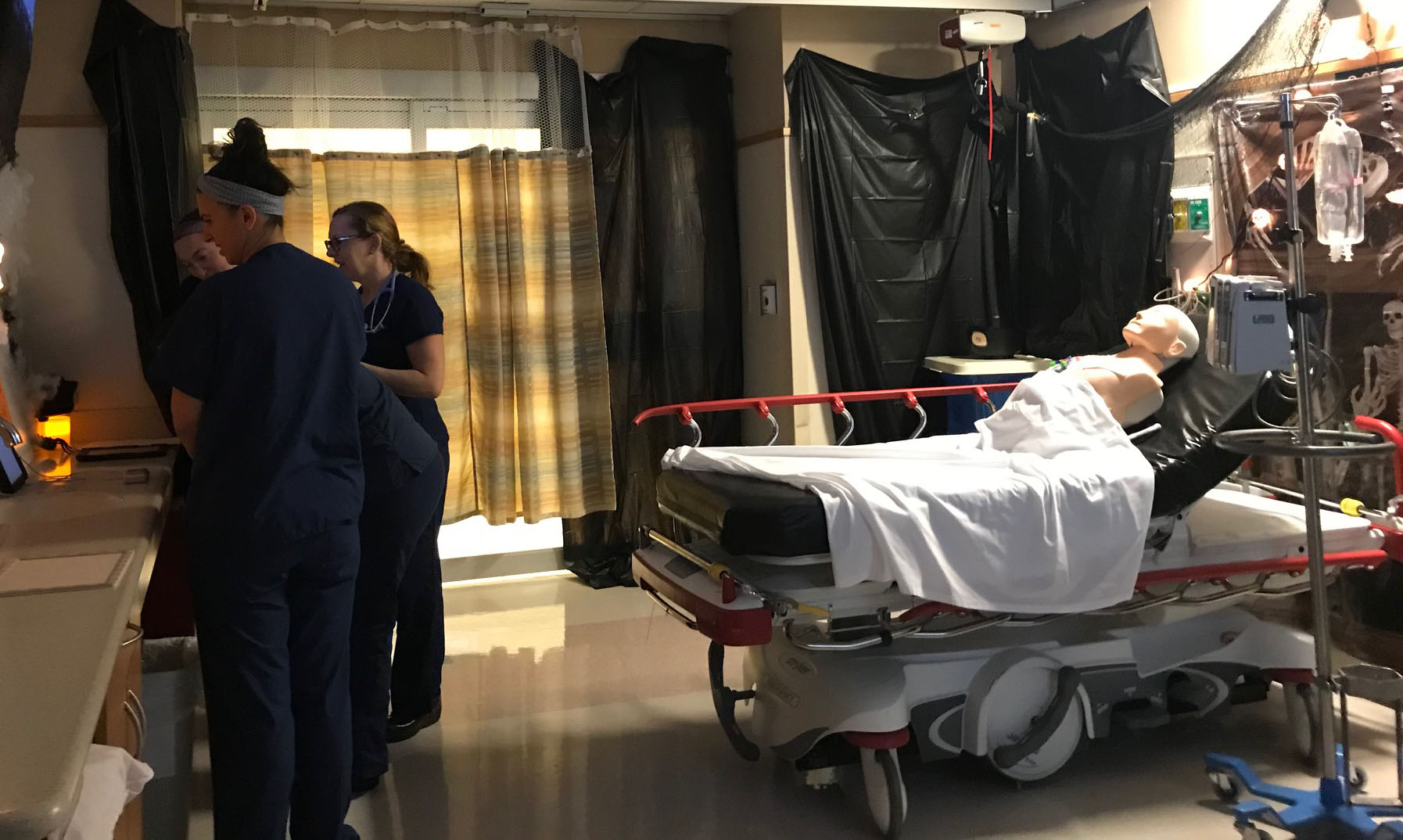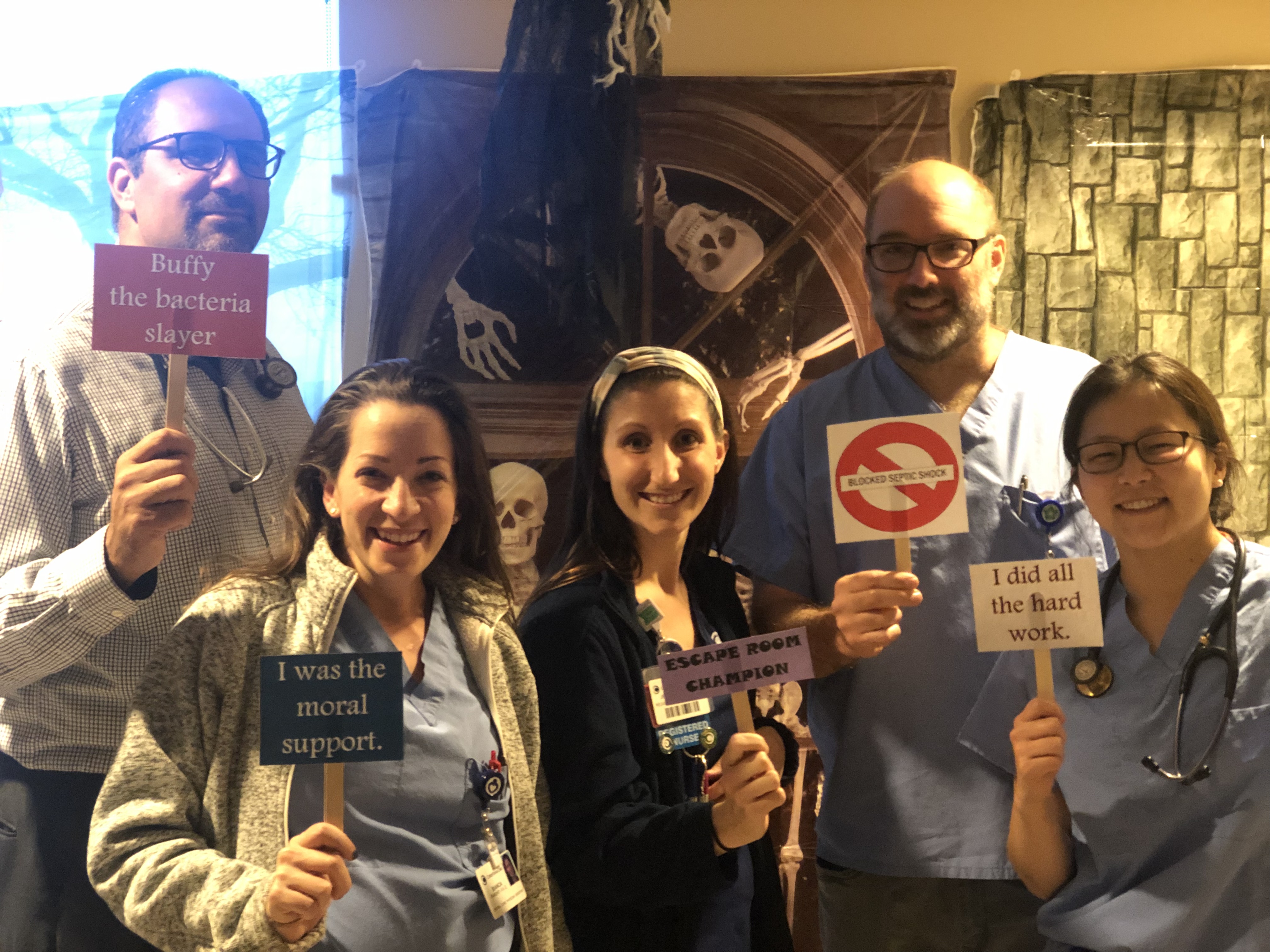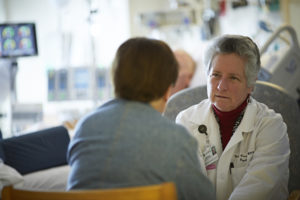The clock starts ticking. Tension is in the air. The several ChristianaCare caregivers locked in the room have their game faces on to engage in an intense — yet fun — simulation.
Their mission: to recognize and treat sepsis, a serious, often fatal medical condition, before it can harm a patient in the Medical Intensive Care Unit (MICU) at Christiana Hospital.
The name of the game is Sepsis Escape Room, a live-action puzzle in which a team assembles in a themed room and is given 20 minutes to complete its mission and “escape” the room.

Escape rooms can be played in many settings and themes, but at Christiana Hospital, the pretense in the Sepsis Escape Room is that this infection can occur anywhere, on any unit, or in any patient room.
Success in the game requires players to find hidden clues and solve challenging puzzles throughout the room, fighting the clock until they manage to get out — or not, according to Maureen A. Seckel, APRN, ACNS-BC, CCNS, CCRN, FCCM, FCNS, critical care clinical nurse specialist and sepsis leader.
A total of 58 caregivers participated, including MICU nurses, physician assistants, advanced practice nurses, residents and intensivists, said Erin Hare, MSN, PCRN, NPDS.
According to Hare, this was a novel and fun way to learn while building interdisciplinary team relationships. “Escape or not, the experience was a total win,” she said.
“The mission to recognize and treat sepsis and adapting it to an escape room format to tackle a sepsis challenge was fun to create,” she said.
According to Seckel and Hare, the Sepsis Escape Room used traditional escape room riddles, clues, puzzles and locked boxes to teach and reinforce good sepsis care in both recognizing sepsis (an infection with new organ damage) and treating appropriately and timely with the Sepsis Bundle (lactate, blood cultures, antibiotic and fluids).
Preliminary data show that participants both enjoyed the training and improved their comfort level with sepsis management.



